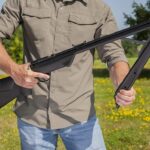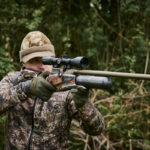It’s spotted (or speckled) seatrout time!
I remember how excited I was the first time I finally figured out how to catch seatrout.
My only regret was that I really wish someone had taught me the three shortcuts that I am about to share with you.
Why?
Because I can vividly recall how frustrated I was getting when I was hardly catching anything on our vacation trips to the coast when I was used to consistently catching bass on the lakes in my hometown… it was painfully frustrating!
To me, fishing was not just a basic hobby to fill in free time… it was an absolute passion.
It is what I spent all of my lawn mowing money on. And I would do all I could do to get out on the water as much as humanly possible.
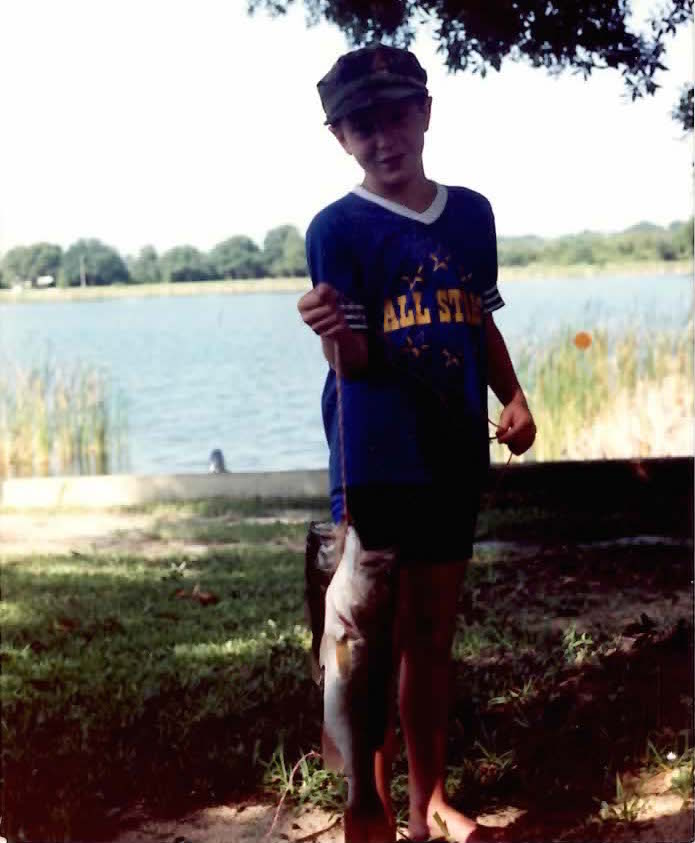
This passion allowed me to become a very accomplished bass angler at a young age, but I had a very difficult time making the proper adjustments to find success along the coast of Florida.
So here are three essential shortcuts that anyone can use for catching seatrout in Florida (and beyond):
Table of Contents
1. Learn How To Assess An Area For Feeding Seatrout
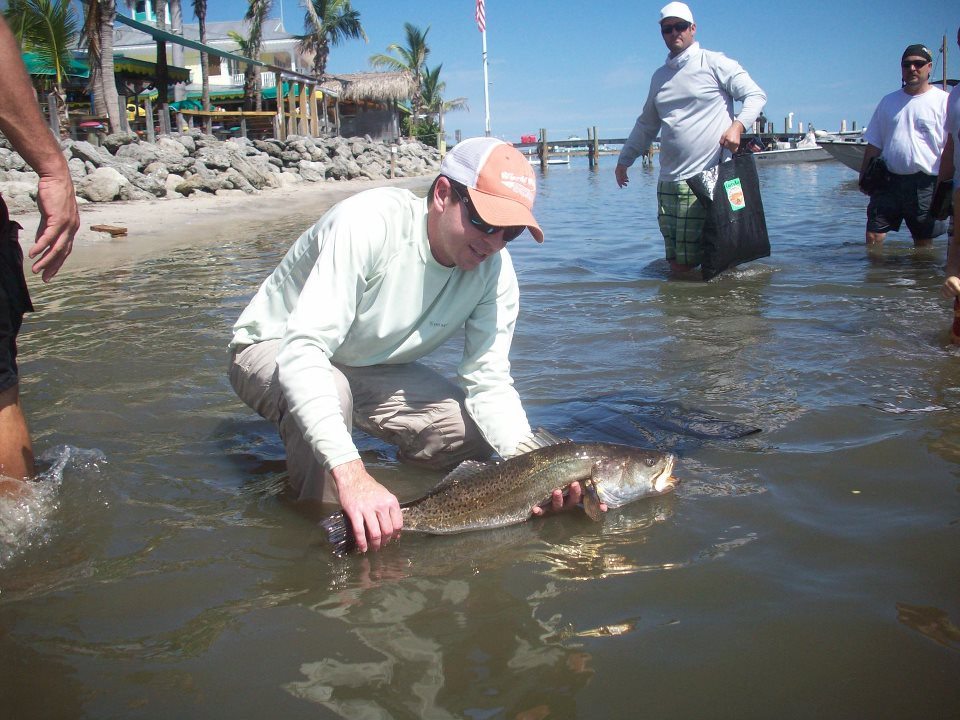
Learning how to assess an area for feeding seatrout is by far the most important shortcut of all.
It is the core factor causing most anglers to come home empty handed… or nothing more than a measly catfish (which many believe are even worse than catching nothing at all).
To be able to consistently catch seatrout, it is absolutely essential to be able to quickly assess an area for it potential to be a good feeding ground.
Without this knowledge, you’ll waste tons of time fishing in spots that have very little chance of success.
Fortunately, finding good seatrout feeding areas isn’t complicated and doesn’t require a sixth sense…
In fact, it’s actually quite easy once you simply focus on these 3 things:
- Structure
- Bait
- Current
Yes, these three simple variables will significantly help you find good areas to catch seatrout… even in regions that you’ve never even been to before which will make vacation trips to a new area even more enjoyable.
Here’s a breakdown of what to consider within each of the variables:
Structure
In saltwater fishing, there are a lot of different forms of structure that often hold predator fish like seatrout, redfish, snook, etc… here’s a brief list:
- Seagrass*
- Oyster Bars
- Points
- Trees/Roots/Stumps
- Rocks
- Docks
*For the quickest shortcut for finding seatrout, I recommend focusing on underwater seagrass because seatrout often stay around seagrass beds where they feed and reproduce.
So focusing on seagrass will be key in consistently catching trout, and these areas can be easy to spot from free online maps with the trained eye…
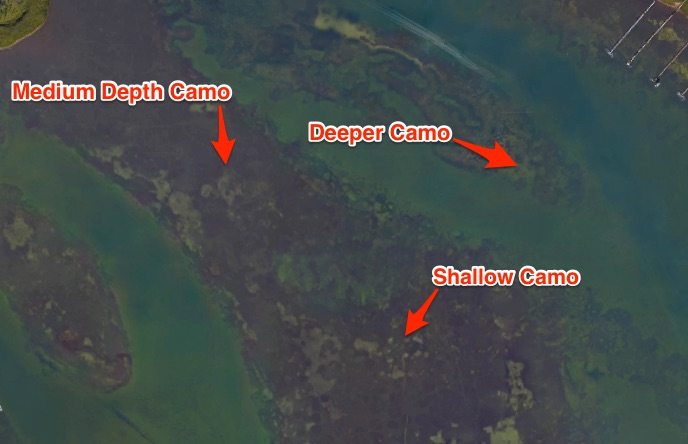
Note: Secret tips for reading this online map image example for seatrout feeding areas is explained below the putting it all together section.
Bait
If we could read a seatrout’s mind, my guess is that only two things will be there:
- Where can I get my next meal?
- How can I not be a meal to something else?
Knowing that food is one of their primary concerns, it is extremely important to pay attention to what type of bait is in the area you’re fishing.
If you’re not seeing any type of bait making ripples on the surface or flashing under the water, and you’re also not feeling any slight nibbles on your lure from small pinfish, snapper, etc., then it’s time to move to another spot where more food is present.
When you are seeing bait, make sure to take note of its size and shape so that you can select a lure that resembles the bait that’s in the area.
But when in doubt, a 3 to 4-inch soft plastic jig is a safe bet.
And when using soft plastics, always remember that rigging it is incredibly essential… here’s a video showing how to rig one of my favorite trout jigs:
Current
Seatrout are ambush predators that prefer to stay still and pounce on an unsuspecting prey for an easy meal.
And current significantly helps them get more food with less effort because it allows them to hide in the seagrass while waiting on shrimp or small baitfish to come close to their hiding spot.
So I recommend focusing on areas that are close to passes/inlets that get a good amount of clean running water throughout tidal fluctuations whenever possible.
Putting It All Together: Structure + Bait + Current
Since seatrout are focused on where they’ll find their next meal while being protected from becoming the next meal to something bigger, focusing on areas that have healthy seagrass, bait, and some current is incredibly important.
Having two of those variables is great, but having all 3 should be the core goal.
Wondering how to find areas with good seagrass?
Although nothing beats seeing areas firsthand, there simply isn’t enough time in the day to check out all areas from the water.
And of course not all seagrass areas are created equal… here’s an easy tip that’ll help narrow down your search.
I highly recommend using online maps like Google or Bing so that you can narrow down your search to areas that have grass that’s visible from satellite images.
How To Use Online Maps To Find Seagrass
For seatrout, I have the best results fishing areas with healthy grass with potholes scattered around… from online maps, this ideal bottom looks like a camo pattern (see below):
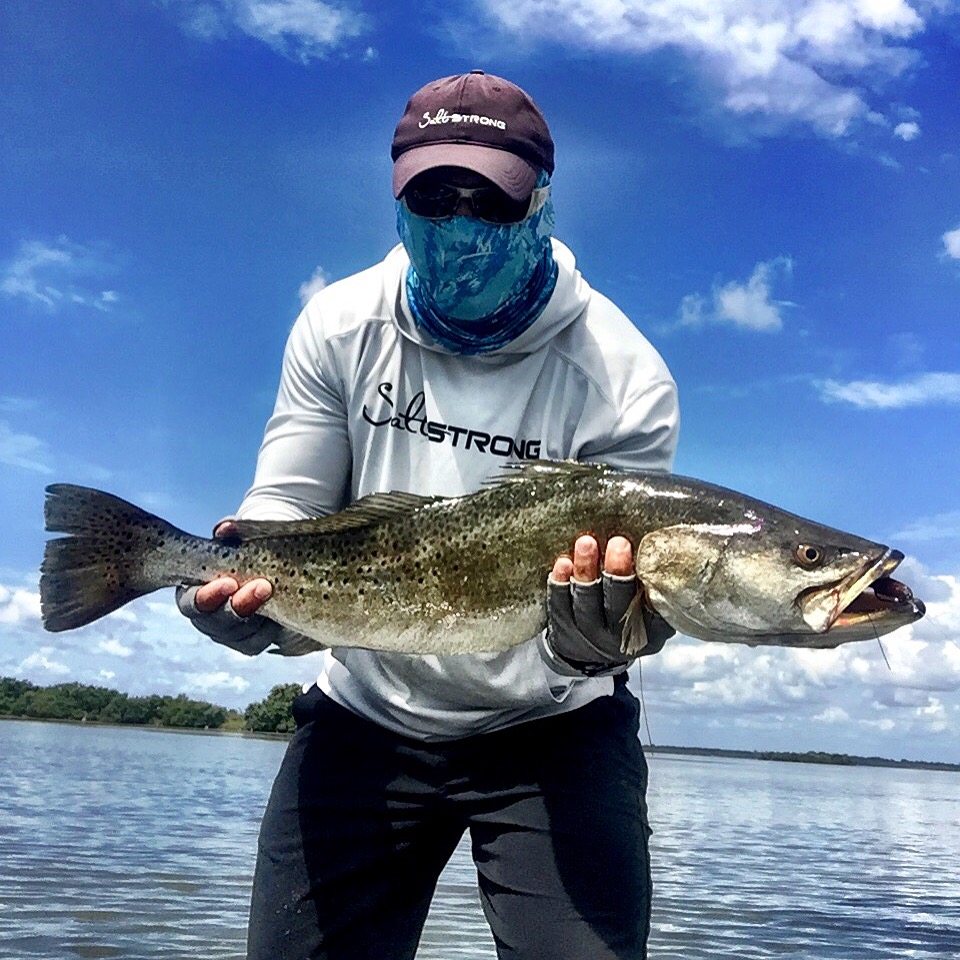
As you can see, these online satellite maps can show a very good look at the bottom structure and respective contour. And this helpful insight allows you to put together a good plan before you even get out on the water.
For example, you can clearly see the dark regions (which is seagrass)… and the light areas that are mixed in the dark grass areas are potholes that seatrout often use as ambush points.
Further, you can even use the clarity of the bottom to get a pretty good gauge at the depth of the water.
With this knowledge, you now know what specific areas to target during a certain tide.
For example, low tide would make the deeper spots more appealing while a high tide typically has the fish shifting up into shallower areas to feed.
How to Determine Water Depth From Satellite Images
To determine the water depth, you simply can use the clarity of the lines between sand and grass to be able to judge its depth.
For example, the edges of sand to grass in the areas where the “Shallow Camo” text is displayed is much more crisp than the surrounding areas which means that it’s shallower. This spot is so shallow and clear that you can even see prop scars in the grass (the white lines are from Googans running over the flat while their prop is cutting up the grass).
Important Note: Always be very mindful of your motor when going over grassflats because it takes seagrass a very long time to recover from prop damage… slow down to no wake and trim the motor way up so that it’s out of the grass. I even have passengers get up to the front of my boat so that it raises the prop even higher (surprisingly effective for small boats).
2. Use The Right Gear
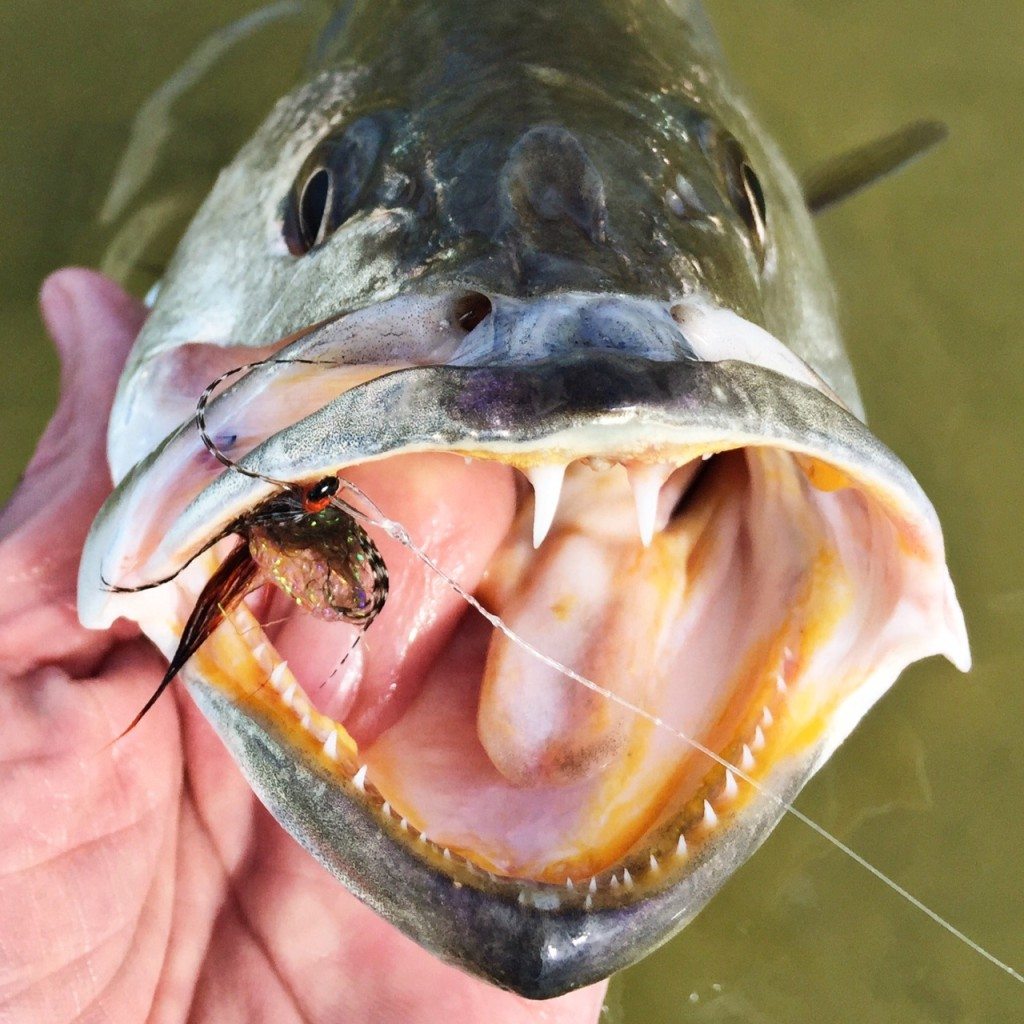
Many people cringe when thinking about having to go to a store to pick out fishing equipment knowing that the budget seems to get overblown every time.
But for seatrout, the tackle used to catch them does not have to be top of the line. In fact, I find that most people spend way more than necessary when targeting seatrout and redfish on the flats and inshore waterways.
Since seatrout aren’t the strongest fighters, and their teeth (although sharp) are not good at breaking leaders so heavy tackle is not needed.
In fact, I found that I catch way more fish when I’m using my 10 lb braid with 20 lb leader than I ever did when I used to use 20 lb main line to 30+ lb leader… and not just more, I’m catching much bigger fish too.
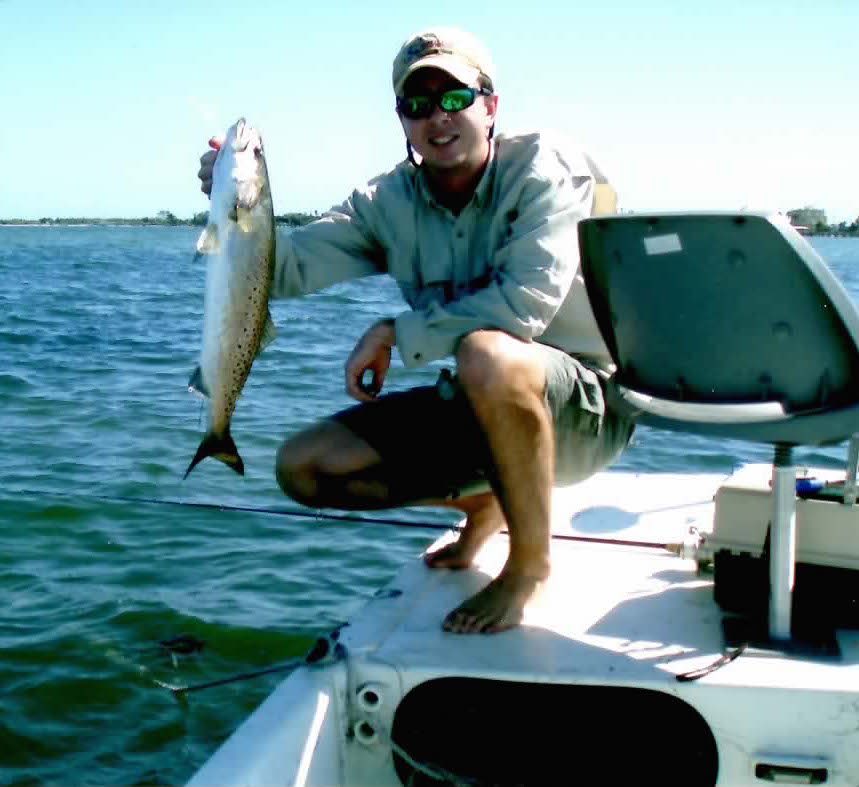
So here’s what I recommend for seatrout:
- Rod – 7′ to 7’6″ Medium to Medium Heavy
- Reel – small spinning reel (2000 to 2500 series for most brands)
- Line – 8 lb to 10 lb braid
- Leader – 20 lb fluorocarbon
- Lure – soft plastic bait rigged on a jig head
And here are some specifics for each:
Best Fishing Rod For Seatrout
Although most people seem to focus on the quality of their fishing reels with little attention paid to the rod, I completely disagree with that order of importance.
For example, I’d much rather go fishing with a $10 kids reel attached to a good rod, than use a $400 reel paired with a $10 kids rod.
This is because the rod does a vast majority of the work:
- Casts bait
- Feels strikes
- Sets the hook
- Works lure (assuming artificial lure is being used)
- Provides necessary bending cushion when fighting fish
Essentially, the fishing rod an extension of your hands and it is in charge of the most important tasks.
So I highly recommend budgeting the most money for a good rod for inshore fishing.
For fishing artificials, I like Medium to Medium-Heavy rods. And if using live bait, it’ll to go with Medium rods (many people seem to like Medium Light rods for live baiting, but I have not yet found a ML rod that I like).
Best Fishing Reel For Seatrout
In contrast to the rod tasks specified above, a reel essentially does only two things:
- Retrieves line
- Provides drag when fighting a big fish
And although these two tasks are important, the difference in smoothness between a basic reel and a top of the line $400 reel isn’t worth the upgrade for most weekend warrior anglers.
And the drag is of course very important, but that doesn’t even come into play unless the rod handles its tasks effectively.
Plus, seatrout typically do not fight hard at first so they’re easy to pull away from structure when using light line.
And the proper drag setting for a reel is just 20% to 30% of the line strength, so the drag needed when using 10 lb line is just 2 to 3 lbs, which even the most basic reels can provide.
So I now stick with smaller reels (2000 to 2500 series) because they are lighter (more comfortable on a full day of casting) with the added benefit of being more affordable. And although small, they still hold plenty of line and even the inexpensive ones provide plenty of drag.
Best Fishing Line For Seatrout
After I finally was talked into trying out braid after years and years of mono use, I firmly believe that braided line is the way to go for targeting seatrout, redfish, snook, and most other inshore species.
This is because its very thin and non-stretch characteristics combine to allow for much more distance in casting and much better feel of strikes… and these two benefits can be a game-changer for inshore anglers.
But if you’re new to braid or you’re about to make the jump, make sure to know how to spool it properly as well as which knots to tie because adjustments are needed for braid because of its slick surface.
Note: Here are two articles that you should read if you’re not yet comfortable with braid:
- Best Fishing Knot For Braided Line
- How To Spool A Spinning Reel While Saving Time & Money
Although braid is much thinner than mono, some anglers chose their braid based on the similar diameter to mono theory… thinking that using a 30 lb braid for seatrout is ok because its diameter is equal to a 10 lb mono… but that sort of thinking will hinder your catch results.
Instead of comparing line diameters to other alternatives in mono, simply put your focus on getting the smallest diameter line possible while still having enough power to land your target species.
And my best answer to that for inshore fishing has been 10 lb braid… not only for seatrout of all sizes, but I’ve landed 40+ inch snook, redfish, and tarpon on it too so it’s plenty strong (knot contests with 10 lb PowerPro using the FG Knot have surpassed 20 lbs of strength).
Note: If you’re worried that lightweight rods and small reels won’t be able to handle a big trout or redfish that hits, then watch the video below where a ~50 lb tarpon in landed on a 2500 series spinning reel with 10 lb braid:
Best Leader Line For Seatrout
There seems to be a lot of debate between traditional monofilament line users and those who use the newer Fluorocarbon. In case you haven’t heard of fluoro, it’s a type of monofilament line that has roughly the same density as water, and it’s known to be less visible to fish since it decreases the refraction of light.
The debate against fluoro seems to focus on reflection being the core reason why fish can see line or not (vs. refraction) making the refraction benefit of fluoro a non-issue.
However, there seems to be greater consensus that fluorocarbon is better at withstanding abrasions, so many use it for their leader material knowing that their target species have some sharp teeth.
Whichever type of mono you choose (traditional of fluoro), I recommend using 20 lb leader when targeting seatrout because that’s plenty to land even the gators while being small enough to not spook them on days that they’re leader shy.
Best Lures For Seatrout
Seatrout are a favorite species of many inshore anglers because of their propensity to aggressively attack a very large variety of lures.
My personal favorite in terms of fun is to use topwater lures to get them to come up and attack the lure at the surface of the water.
Many great options are available at almost any tackle shop such as spooks, skitterwalks, etc.
But my go-to lure when wanting the maximize the quantity of seatrout that I’ll catch is undoubtedly a soft plastic bait rigged on a light jig head. These jigs can get strikes all day long. And they can be successfully worked to target any specific depth that they seem to be holding in.
As for jig head size, I almost always stick with 1/8th oz and focus in on areas that are in 2 ft to 5 ft of water.
For the soft plastics used, I’ve found plenty of success with from Berkely, Zman, Zoom, DOA, etc. (there are an absolute ton of options).
3. Learn How To Use The Right Gear
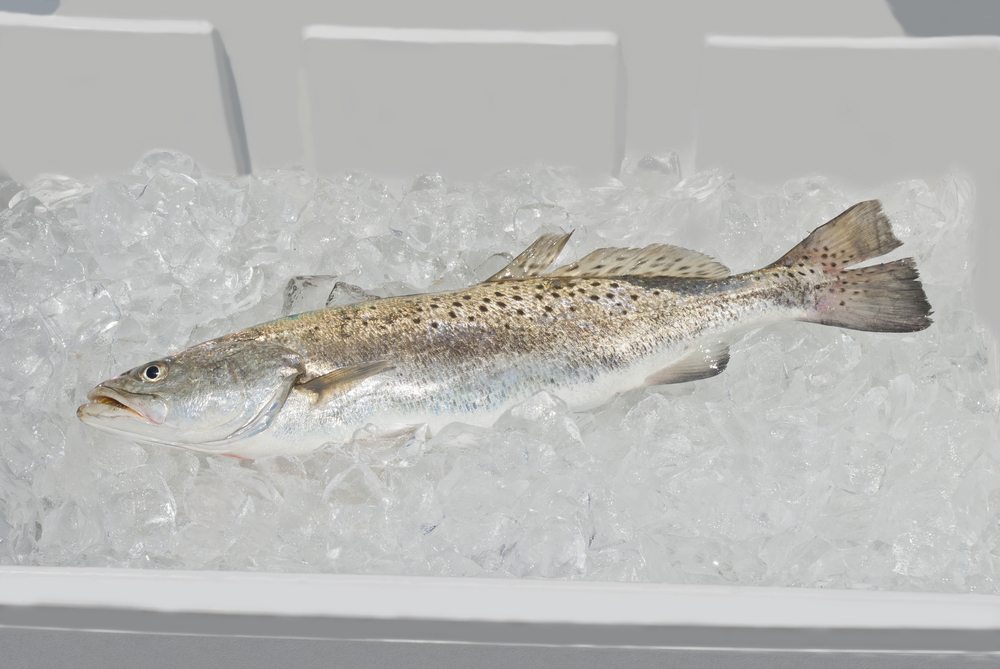
The great thing about inshore fishing is that it’s not about having the best boat, kayak, rod, reel, line, lure, fishing clothes, etc… it’s all about knowing how to use what you’ve got.
It’s 100% about knowing how to find areas with good fish and then knowing how to successfully use your tackle to generate strikes.
And many of the best fishing areas are accessible by foot or even the cheapest of all kayaks that can be used to simply paddle across a channel to wade fish a good flat.
Best of all, I’ve found that it’s much better to become an expert at just one lure than to be decent at using a whole tackle shop full, so you can catch a ton of fish with just using one lure and one rod/reel combo.
And if you decide to make the soft plastic bait rigged on a jig head to be your go-to lure, then here’s a video showing some helpful tips on maximizing your results by getting strikes from seatrout that aren’t actively feeding.
Note: If you’re serious about consistently catching seatrout along with other inshore species, then I highly recommend taking advantage of our 30-day risk-free trial of our Inshore Slammer course… click here to learn about this popular online fishing course.
Conclusion
Learning how to catch seatrout can seem like a daunting task. But as you’ll find after focusing on the essentials, it’s truly not as hard as most people think.
And when you combine the art of knowing how to find areas that are prone to have feeding trout along with the art of generating strikes, you’ll find that they days of getting skunked will be a distant memory.
These basic tips should allow you to go out and find the most common sized trout on the grass flats making for many fun memories with friends and family.
If you’re interested in learning the secrets to catching gator trout along with redfish and snook, then I highly recommend giving our online fishing course called the Inshore Slammer Online Fishing Course a shot because we have a 100% Thrilled guarantee behind it…
Meaning that you get a full refund if you’re somehow not 100% thrilled that you took the course.
Click here to learn more about the Inshore Slammer
And if you haven’t seen the 4-part Trout Tutorial video series with Capt. C.A. Richardson, I urge you to click here so you can get all four videos emailed to you for free.
[Important Note]: Of all the inshore fish, spotted seatrout are one of the most fragile of all so it is essential that we take the best possible care of all trout that are going to be released. Click here to see The Complete Guide To Catch, Photo, & Release Fishing.
P.S. – If you have any friends who could use some pointers on consistently catching seatrout, please share this article with them so they can have more fun out on the water.









































